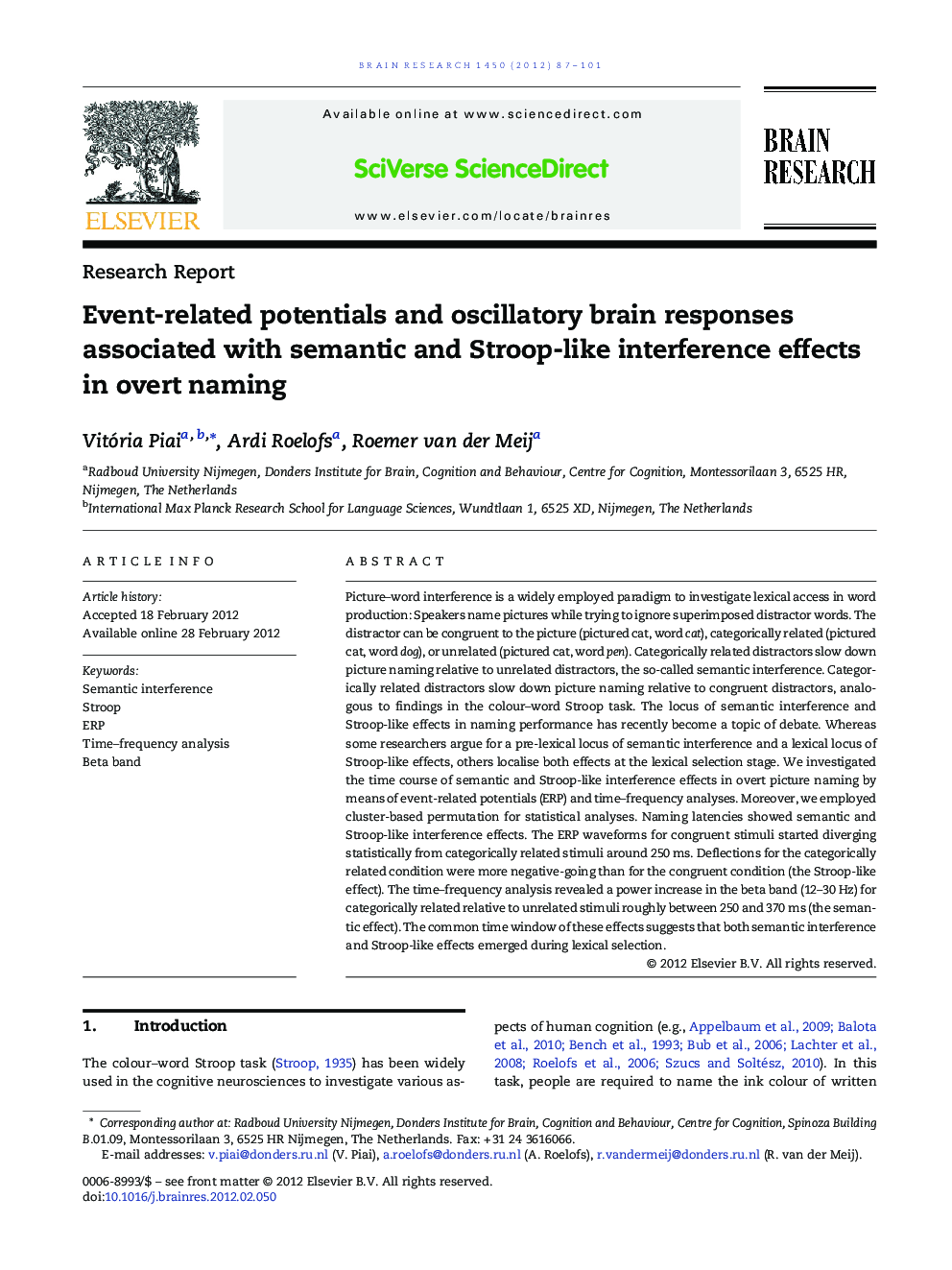| Article ID | Journal | Published Year | Pages | File Type |
|---|---|---|---|---|
| 6264415 | Brain Research | 2012 | 15 Pages |
Picture-word interference is a widely employed paradigm to investigate lexical access in word production: Speakers name pictures while trying to ignore superimposed distractor words. The distractor can be congruent to the picture (pictured cat, word cat), categorically related (pictured cat, word dog), or unrelated (pictured cat, word pen). Categorically related distractors slow down picture naming relative to unrelated distractors, the so-called semantic interference. Categorically related distractors slow down picture naming relative to congruent distractors, analogous to findings in the colour-word Stroop task. The locus of semantic interference and Stroop-like effects in naming performance has recently become a topic of debate. Whereas some researchers argue for a pre-lexical locus of semantic interference and a lexical locus of Stroop-like effects, others localise both effects at the lexical selection stage. We investigated the time course of semantic and Stroop-like interference effects in overt picture naming by means of event-related potentials (ERP) and time-frequency analyses. Moreover, we employed cluster-based permutation for statistical analyses. Naming latencies showed semantic and Stroop-like interference effects. The ERP waveforms for congruent stimuli started diverging statistically from categorically related stimuli around 250Â ms. Deflections for the categorically related condition were more negative-going than for the congruent condition (the Stroop-like effect). The time-frequency analysis revealed a power increase in the beta band (12-30Â Hz) for categorically related relative to unrelated stimuli roughly between 250 and 370Â ms (the semantic effect). The common time window of these effects suggests that both semantic interference and Stroop-like effects emerged during lexical selection.
⺠We examined the locus of semantic and Stroop-like effects in naming performance. ⺠We employed event-related potentials (ERP) and time-frequency (TF) analyses. ⺠ERP waveforms showed a Stroop-like effect starting around 250 ms. ⺠TF analyses revealed beta power increase between 250 and 370 ms for the semantic effect. ⺠The common time window of the effects suggests they emerged during lexical selection.
